 Its capital
Its capital  was Mesilla along the southern border.
was Mesilla along the southern border. The Confederate territory overlapped the Arizona Territory created by the Union
government in 1863, but the physical geography differed in that the
Confederate Arizona Territory was
The Confederate territory overlapped the Arizona Territory created by the Union
government in 1863, but the physical geography differed in that the
Confederate Arizona Territory was approximately the southern half of the
pre-existing New Mexico Territory, while the Union Arizona Territory
was approximately the western half of what had been New Mexico
Territory.
approximately the southern half of the
pre-existing New Mexico Territory, while the Union Arizona Territory
was approximately the western half of what had been New Mexico
Territory.
The territory was officially declared on August 1, 1861, following the Confederate victory at the Battle of Mesilla. Confederate hold in the area was soon broken, however, after the Battle of Glorieta Pass, the defining battle of the New Mexico Campaign.
 In July 1862, the government of the Confederate Territory of Arizona relocated to El Paso, Texas, where it remained for the duration of the war.
In July 1862, the government of the Confederate Territory of Arizona relocated to El Paso, Texas, where it remained for the duration of the war.
However, the territory continued to be represented in the Confederate Congress and Confederate troops continued to fight under the Arizona banner until the war's end.

Before the start of the war the land of the current states of New Mexico and Arizona was part of the New Mexico Territory and the Gadsden Purchase which ran parallel to William Walker's Republics of Lower California and Sonora.

In the summer of 1853, an American adventurer and soldier by the name of William Walker
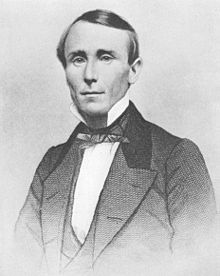 to Guaymas,
to Guaymas, seeking a grant from the government of Mexico to create a colony that would serve as a fortified frontier, protecting US soil from retaliations by Native Americans. Mexico refused, and Walker returned to San Francisco determined to obtain his colony, regardless of Mexico's position.
seeking a grant from the government of Mexico to create a colony that would serve as a fortified frontier, protecting US soil from retaliations by Native Americans. Mexico refused, and Walker returned to San Francisco determined to obtain his colony, regardless of Mexico's position. He began recruiting from amongst American supporters of slavery and the Manifest DestinyDoctrine, mostly inhabitants of Kentucky and Tennessee. His intentions then changed from forming a buffer colony to establishing an independent Republic of Sonora, which might eventually take its place as a part of the American Union (as had been the case previously with the Republic of Texas).
He began recruiting from amongst American supporters of slavery and the Manifest DestinyDoctrine, mostly inhabitants of Kentucky and Tennessee. His intentions then changed from forming a buffer colony to establishing an independent Republic of Sonora, which might eventually take its place as a part of the American Union (as had been the case previously with the Republic of Texas). He funded his project by "selling scripts which were redeemable in lands of Sonora." early as 1856 concerns had been raised about the ability of the territorial government in Santa Fe to effectively govern the southern part of the territory which was separated by the
He funded his project by "selling scripts which were redeemable in lands of Sonora." early as 1856 concerns had been raised about the ability of the territorial government in Santa Fe to effectively govern the southern part of the territory which was separated by the 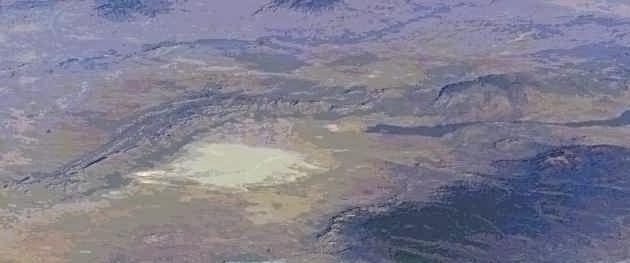 Jornada del Muerto, a difficult stretch of desert.
Jornada del Muerto, a difficult stretch of desert.
In February 1858, the New Mexico territorial legislature adopted a resolution in favor of the creation of the Arizona territory, but with a north-south border along the 32nd meridian west from Washington with the additional stipulation that all the Indians of New Mexico would be removed to northern Arizona.
In April 1860, impatient for Congress to act, a convention was called and 31 delegates met in Tucson. In July 1860, the convention drafted a constitution for a "Territory of Arizona" to be organized out of the New Mexico Territory south of 34° N. The convention elected Lewis Owings as the Territorial Governor, and elected a delegate to Congress.
The proposal, however, did not succeed in Congress because of opposition from anti-slavery Congressmen because many people in the area were pro-slavery with business connections in southern states, and this new territory lay below the old Missouri Compromise line of demarcation between slave and free states. Thus anti-slavery Congressmen feared the new territory might eventually become a slave state.
Since the proceedings of the Tucson convention never were ratified by the United States Congress the Provisional Territory never became a legal entity. However for a time it did operate as a de facto, if not de jure, government for the intended Arizona Territory. Dr. Lewis Owings, Governor of the Provisional Territory, appointed James Henry Tevis to raise the first Territorial Militia which comprised three companies of Arizona Rangers for the protection of the Territory from marauding Apaches and bandits. Two companies were raised in the Pinos Altos mining camp and another at Mesilla.Pinos Altos, in Grant County,
 New Mexico, was a mining town, formed in 1860 following the discovery of gold in the nearby Pinos Altos Mountains. The town site is located about five to ten miles north of the present day Silver City, New Mexico. Although once abandoned, the town is now a place for summer homes and caters to tourists.
New Mexico, was a mining town, formed in 1860 following the discovery of gold in the nearby Pinos Altos Mountains. The town site is located about five to ten miles north of the present day Silver City, New Mexico. Although once abandoned, the town is now a place for summer homes and caters to tourists.
Originally named Birchville, after prospector Robert H. Birch, one of three finding the first gold, it later took the Spanish name Pinos Altos, meaning tall pines, because there were tall trees growing in the area.  These were cut down as the town grew to have a population of about 9,000 during the 1880s and 1890s before slowly being abandoned during the early 1900s. Today, many of the original buildings remain.
These were cut down as the town grew to have a population of about 9,000 during the 1880s and 1890s before slowly being abandoned during the early 1900s. Today, many of the original buildings remain.
 These were cut down as the town grew to have a population of about 9,000 during the 1880s and 1890s before slowly being abandoned during the early 1900s. Today, many of the original buildings remain.
These were cut down as the town grew to have a population of about 9,000 during the 1880s and 1890s before slowly being abandoned during the early 1900s. Today, many of the original buildings remain.
From the discovery of gold in 1860 until late 1861, miners were harassed by Apache Indian opposed to white settlers invading their lands. On September 27, 1861, it was the site of the Battle of Pinos Altos between the Arizona Guards of Pinos Altos, a Confederate Arizona Territorial militia company, andApache warriors led by Mangas Coloradas and Cochise. This battle did not end the conflict between white settlers and Indians, which continued for several years, with neither side particularly willing to see the dispute resolved peacefully. Even when a treaty was eventually negotiated between the settlers and Indians, a settler hosting a dinner to celebrate the signing opened fire on 60 unarmed Indians, killing and injuring many of those assembled. Indian hostility continued until the military built forts to protect the settlement in 1869.
The town's Zipcode is 88053. The post office is located in the Pinos Altos Ice Cream Parlor. 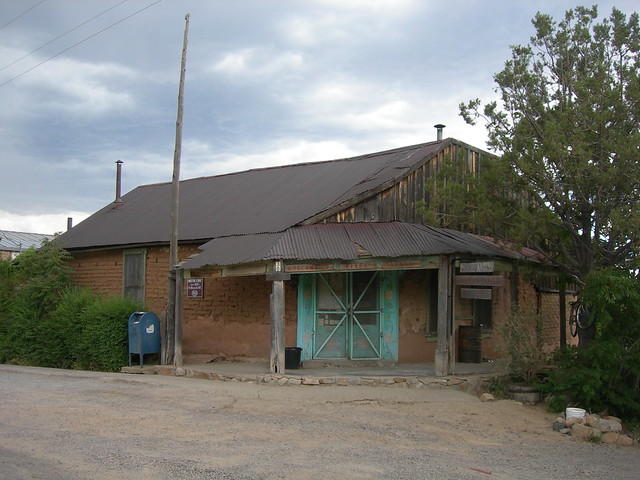 old opera house has been combined into a restaurant with the Buckhorn Saloon.
old opera house has been combined into a restaurant with the Buckhorn Saloon.
After the start of the American Civil War support for the Confederacy
was strong in the southern part of the New Mexico Territory largely due
to its neglect by the United States government. Other concerns were the
lack of substantial numbers of troops to fight the Apaches who were terrorizing travelers, ranches and mining camps all over Traditional Arizona following the Bascom Affair. Another was the closing of the Butterfield Overland Mail stations which connected the Arizona frontier colonies to the East and California. The Arizonans felt abandoned which fueled dissatisfaction for the federal government. old opera house has been combined into a restaurant with the Buckhorn Saloon.
old opera house has been combined into a restaurant with the Buckhorn Saloon.In March 1861, the citizens of Mesilla called a secession convention to separate themselves from the United States and join the Confederacy.
On March 16 the convention adopted a secession ordinance citing the region's common interests and geography with the Confederacy, the need of frontier protection and the loss of postal service routes under the United States government as reasons for their separation. The ordinance proposed the question of secession to the western portions of the territory and on March 28 a second convention in present day Tucson, Arizona also met and ratified the ordinance.

The conventions subsequently established a provisional territorial government for the Confederate "Territory of Arizona." Owings was again elected as provisional governor and Granville Henderson Oury
 was chosen as a delegate to petition for the territory's admission into the Confederacy.
was chosen as a delegate to petition for the territory's admission into the Confederacy.
The rebels established a military post
 Fort Yuma on the banks of the Colorado River in 1862 adjacent to the Union army post with the same name on the other side in California.
When the end of Confederate rule arrived, the Fort Yuma on the Arizona
side was abandoned by Confederate cavalry troops who were mostly
immigrant Irish.
Fort Yuma on the banks of the Colorado River in 1862 adjacent to the Union army post with the same name on the other side in California.
When the end of Confederate rule arrived, the Fort Yuma on the Arizona
side was abandoned by Confederate cavalry troops who were mostly
immigrant Irish.They avoided capture by Union soldiers by fleeing to Mexico 10 miles away. In July 1861 a force under
 Lieutenant Colonel John Baylor arrived in
Lieutenant Colonel John Baylor arrived in 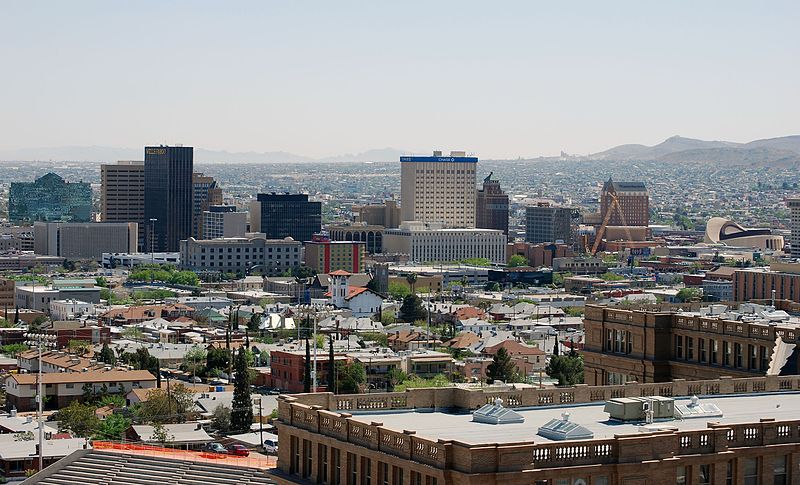 El Paso, Texas across the border from Mesilla.
El Paso, Texas across the border from Mesilla.With support from the secessionist residents of Mesilla Baylor's 2nd Texas Mounted Rifles entered the territory and took a position in the town on July 25. Union forces under Major Isaac Lynde at nearby Fort Fillmore
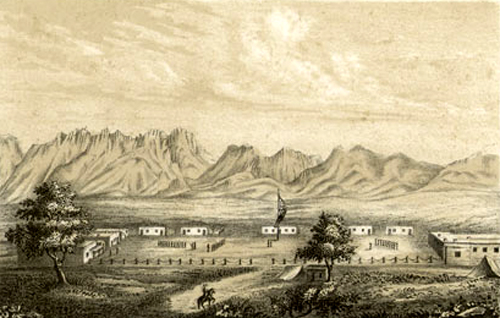 prepared to attack Baylor. On July 27 the two armies met outside of town at the Battle of Mesilla in a brief engagement in which the Union troops were defeated.
prepared to attack Baylor. On July 27 the two armies met outside of town at the Battle of Mesilla in a brief engagement in which the Union troops were defeated.Major Lynde then abandoned Fort Fillmore and began a march north to join the troops at Fort Craig
 under Colonel Edward R. S. Canby.
However, his retreat came to a halt in severe heat and was overtaken by
Baylor. Lynde surrendered his command without a shot fired at San
Augustine Springs, in the Organ Mountains
under Colonel Edward R. S. Canby.
However, his retreat came to a halt in severe heat and was overtaken by
Baylor. Lynde surrendered his command without a shot fired at San
Augustine Springs, in the Organ Mountains
On August 1, 1861, the victorious Baylor proclaimed the existence of a Confederate Arizona Territory, which comprised the area defined in the Tucson convention the previous year. He appointed himself as permanent governor. Among his cabinet members was the Mesilla attorney Marcus H. MacWillie, who served as the territorial attorney general.
The next month, Baylor's men and a Union force would fight a small engagement at the village of
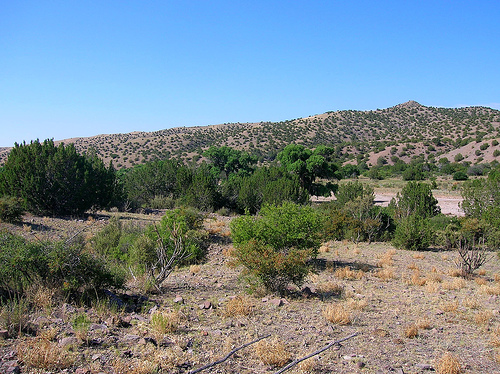 Canada Alamosa, ending with another Confederate victory.
Canada Alamosa, ending with another Confederate victory.The proposal to organize the Confederate Territory of Arizona was passed by the Confederate Congress in early 1862 and proclaimed by President Jefferson Davis on February 14, 1862. To commemorate this event in another era, February 14, 1912, the fiftieth anniversary was selected as official date of statehood for Arizona.
Efforts by the Confederacy to secure control of the region led to the New Mexico Campaign. In 1862 Baylor was ousted as governor of the territory by Davis, and the Confederate loss at the Battle of Glorieta
 Pass
forced Confederate retreat from the territory. The following month a
small Confederate picket troop north of Tucson fought with an equally
small Union cavalry patrol from California in the so-called Battle of Picacho Pass.
Pass
forced Confederate retreat from the territory. The following month a
small Confederate picket troop north of Tucson fought with an equally
small Union cavalry patrol from California in the so-called Battle of Picacho Pass.
Before the Picacho Pass skirmish, Union and Confederate forces fought a smaller engagement known as the Battle of Stanwix Station.
 By July 1862, Union forces were approaching the territorial capital of Mesilla and the Confederates escaped to Texas.
By July 1862, Union forces were approaching the territorial capital of Mesilla and the Confederates escaped to Texas.The territorial government relocated to El Paso, while some Confederate Arizona military units relocated to San Antonio. The government in exile remained in Texas for the duration of the war, although MacWillie continued to represent the territory in the First and Second Confederate Congresses. Resistance in Arizona continued at the partisan level, and Confederate units under the banner of Arizona fought until the end of the war in May 1865.
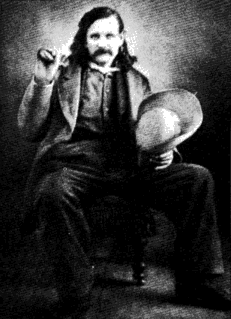
Lt. John W.
"Jack" Swilling
Arizona Guards
 and Picacho Pass fought at the Battle of Apache Pass against 500 Apaches.
and Picacho Pass fought at the Battle of Apache Pass against 500 Apaches. The battle is considered part of the American Civil War.
The battle is considered part of the American Civil War.There were also several engagements between Apaches and Confederates. The Battle of Dragoon
 Springs marks the only known Confederate combat deaths in the modern confines of Arizona. Other engagements include the
Springs marks the only known Confederate combat deaths in the modern confines of Arizona. Other engagements include the  Siege of Tubac, the Battle of Cookes Canyon
Siege of Tubac, the Battle of Cookes Canyon , the Battle of the Florida Mountains,
, the Battle of the Florida Mountains, the Battle of Pinos Altos
the Battle of Pinos Altos  and a number of other smaller skirmishes and massacres.
and a number of other smaller skirmishes and massacres.






No comments:
Post a Comment